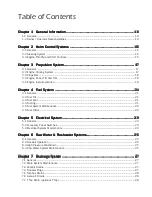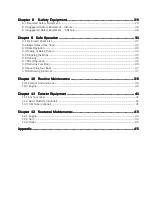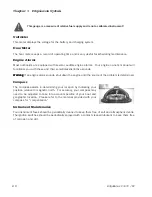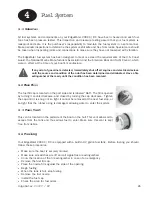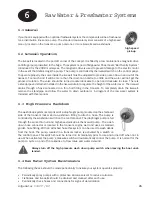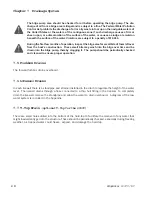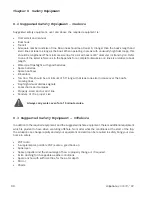
Chapter 2 Helm Control Systems
1 6
EdgeWater 200CC / DC
Do not bring the throttle back abruptly to stop the boat unless it is an emergency. Allow time
for the engine RPM to come down to idle before shifting to reverse or severe gearbox dam-
age could occur.
The control is generally in neutral when the lever is 90
o
to the control box. Moving the lever 15
o
forward
will engage forward gear. Moving the lever 15
o
aft from center will engage reverse gear. There is usually
a slight detent at the point where a gear is engaged.
When shifting from neutral to forward or reverse,
the operator should always perform a brief pause to
allow time for the gear box to engage in the proper
gear at a minimum rpm. This pause will reduce gear
clash and provide for longer gear life.
The levers should never be moved forward for back
without the engine running, with the following ex-
ception. With the Yamaha control, pushing the cen-
ter of the rubber plate on the left side of the control
box disengages the gear shift and provides throttle
only operation with the gear-box remaining in neu-
tral. This provides additional throttle for cold starts
or other warm-up operation.
Do not attempt to control adjustments unless you
are very familiar with their function, operation and
adjustment. Failure to properly adjust the system
components can adversely affect your boat’s
performance and safety. Misadjustment can also
cause severe control, engine or lower unit damage.
Each manufacturer’s engine controls contain a neutral safety switch to prevent accidental starting with
a gear engaged. The adjustment of this device should be done only by a certified technician. If the
engine will not start in neutral, a slight movement of the control may be necessary to locate the actual
“neutral” position of the neutral safety switch.
Engine Stop Switch
This device in designed to prevent the operator falling overboard while the engine
remains running. The engine stop switch lanyard should always be worn by the
operator, while the boat is in motion. Pulling the lanyard from the control will
stop the engine. If the engine will not crank properly, the lanyard may not be
properly attached to the engine stop switch.
Do not use the engine stop switch to stop the boat unless it is an
emergency as it may impair your ability to quickly re-start the engine.
Neutral
Reverse
T
HROTTLE
P
OSITIONS
Forward





